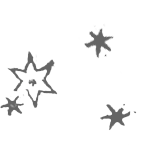Poland
Poland
Exhibit items related to Poland
Exhibit Items
|
Map of the Moon Hevelius, Johann (1647) Accurate depiction of the topography of the Moon was accomplished by mid-century in this lunar atlas by Hevelius. It set a new standard for precision that remained unmatched for a century. |
 |
|
|
The Firmament of King Sobiesci, or Map of the Heavens Hevelius, Johann (1690) The Uranographia of Hevelius, the most detailed and influential celestial atlas of the 17th century, contains 54 beautiful double-page engraved plates of 73 constellations, and 2 oversized folding plates of planispheres. |
||
|
Preliminary Discourse for Astronomy Hevelius, Johann (1690) In the Prodromus, Hevelius explained the instruments and methods used to produce the star catalog. Hevelius’ Gdansk observatory, “Stellaburg,” was the best in Europe until the later national observatories of France and Britain. |
||
| 0 |
The Hevelius Sextant |
|
| 2 |
On Comets Hevelius, Johann (1668) The frontispiece shows three views of the paths of comets: the Aristotelian theory that they consist of vapors beneath the Moon (left); Kepler’s theory that comets move in straight lines (right); and Hevelius’ view that they originate in the outer regions and descend in a parabolic trajectory... |
 |
| 3 |
The Climactic Year Hevelius, Johann (1685) In astrology, a “climactic year” marks a turning point, a moment of greatest risk. The preface explains that 1679 was Hevelius’ climactic year, for in that year his observatory burned. Fire destroyed manuscripts, books and instruments, including his sextant. He was 67 years old. |
|
| 9 |
On the Revolutions of the Heavenly Spheres, 1617 Copernicus, Nicolaus (1617) In De revolutionibus, Copernicus placed the Sun in the center of the universe and set the Earth in annual motion around the Sun. This is the 3d edition, printed in 1617, the year after the Inquisition stimulated fresh interest in the work by placing it on the Index of Prohibited Books. |





